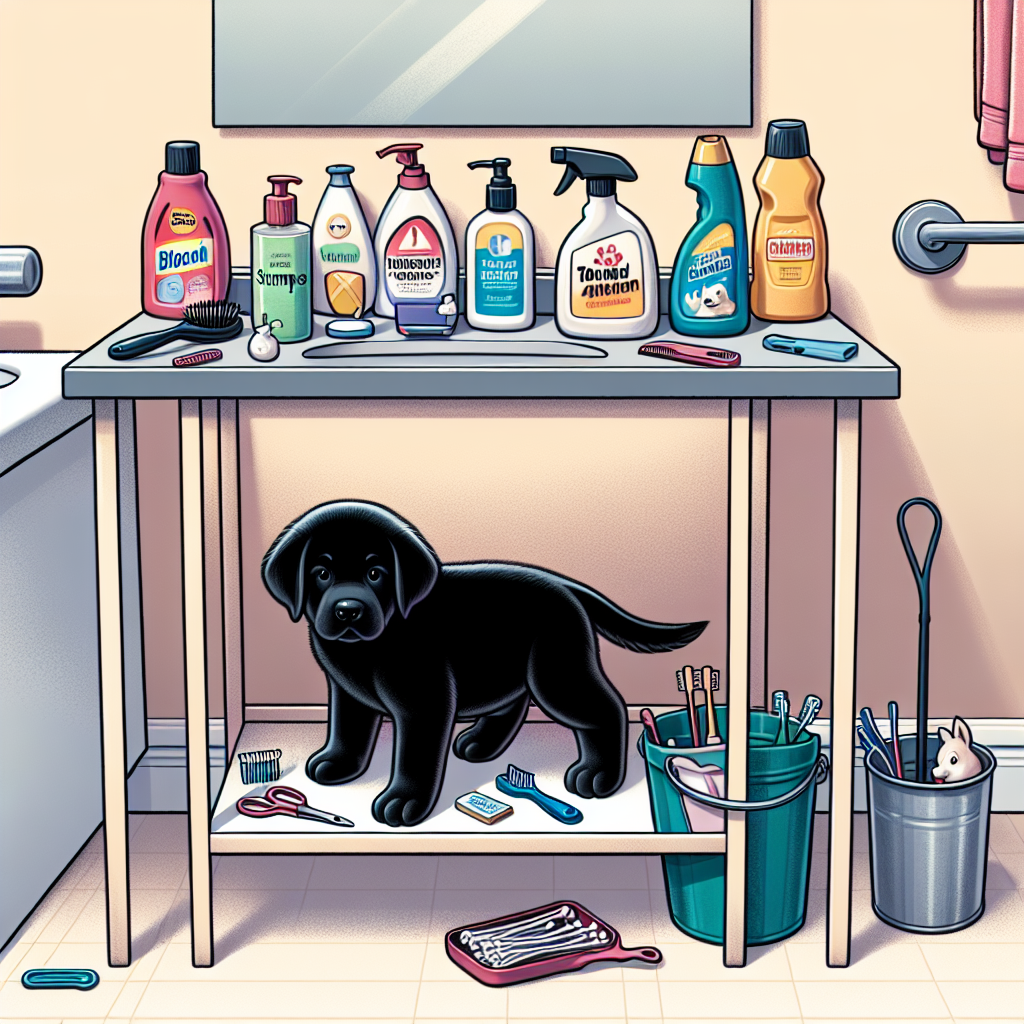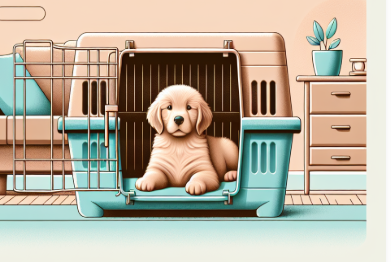Identifying Potential Hazards
The bathroom presents several potential hazards that can put your puppy at risk. First, consider the toxic substances often found in this area. Common cleaners and personal care products such as bleach, detergents, and shampoos can be extremely harmful if ingested. Always ensure that these items are kept out of reach.
Small objects such as razors, cotton swabs, and hair ties pose choking risks. These items are usually left on countertops or within easy reach of a curious puppy. Electrical dangers are another concern. Hair dryers, electric razors, and their cords can be especially tempting for teething puppies, posing risks of electrocution or entanglement. Lastly, watch out for water hazards like open toilets and bathtubs, which could lead to accidental drownings.
Securing and Storing Items
To make your bathroom puppy-safe, start by securing and storing potentially dangerous items. Consider using lockable cabinets or high shelves to store chemicals and toiletries, ensuring they are entirely out of your puppy’s reach. A clutter-free floor is also crucial, which can be achieved by using baskets or bins to organize loose items.
Dealing with electrical cords requires creativity. Use cord covers or keep appliances unplugged and stored away when not in use to avoid any risks. Additionally, applying outlet protectors can prevent curious noses or paws from causing harm. Keeping your bathroom neat and organized is not only aesthetically pleasing, but critical for your puppy’s safety.
Applying Safety Measures
Taking proactive steps to make your bathroom safe involves installing various safety measures. Safety latches on cabinets ensure that nosy puppies can’t open doors and access harmful substances. Toilet seat locks are a valuable addition, keeping lids securely closed and preventing accidental falls into the bowl. These locks are also helpful for securing other water sources like bathtubs and sinks.
Blocking access to particularly dangerous areas is crucial. You can use baby gates or portable fences to keep your puppy away from certain parts of the bathroom. By clearly defining safe zones, you reduce the risk of accidents and create a controlled environment. Properly implementing these safety measures contributes significantly to a safer space.
Creating a Safe Play Area
Incorporating a designated play area within your bathroom provides your puppy a safe spot to be entertained while you go about your routine. Choose a spot away from potential hazards and create a cozy space with rugs or mats that offer comfort and non-slip properties. This selection is particularly important, as they prevent slips and falls.
Adding safe toys and chewing options can keep your puppy distracted and happy. Opt for hard rubber toys or nylon chew sticks that withstand rough play and can deter your puppy from exploring other dangerous objects. An engaged puppy is less likely to get into trouble, so a well-stocked play area is essential.
Training and Supervision
Training your puppy to respect bathroom boundaries takes time, but it pays off in safety dividends. Start with simple commands and be consistent in your instructions. Reward positive behavior and use a firm voice to correct undesirable actions. A well-trained puppy learns quickly about restricted areas.
Supervision is essential, particularly for young puppies who are still learning. Close monitoring allows you to intervene quickly should your puppy approach a hazardous spot. Use clear verbal cues and redirect their attention to their safe play area. Consistency and positive reinforcement are the keys to long-lasting behavioral change.
Special Considerations
Every puppy is unique. Some may require special considerations based on their specific needs or behaviors. Puppies with particular curiosity or adventurous spirits might need extra barriers or distractions to deter them from exploring risky areas. During different seasons, also be mindful of additional hazards such as increased moisture that may heighten the risk of mold or mildew, which puppies might find intriguing.
Adjust your bathroom setup to accommodate these variations. Stay vigilant throughout the year, ensuring that your puppy’s unique needs do not lead to unintended accidents. An adaptable approach ensures continued safety.
Conclusion
Ensuring bathroom safety for your puppy requires attention to detail and ongoing vigilance. As your puppy grows and explores, maintaining a secure environment is crucial. According to the American Kennel Club, “Puppies are curious and love to explore, so keeping potentially dangerous items out of their reach is one of the best ways to keep them safe.” By identifying hazards, implementing preventive measures, and engaging in consistent training, you can protect your puppy and provide a safe space for them to thrive. 🐾 Remember, your dedication now will pay off in their safety and happiness in the long run.# Creating a Puppy-Safe Bathroom: Essential Tips – FAQ
What are the most common bathroom hazards for puppies?
Bathrooms are filled with potential dangers for curious puppies. Toxic substances like cleaning products and personal care items can lead to poisoning if ingested. Small objects, such as razors and cotton swabs, pose choking hazards. Additionally, exposed electrical cords and open water sources like toilets and bathtubs present significant risks.
How can I safely store bathroom chemicals and toiletries?
To keep bathroom chemicals and toiletries out of reach, use lockable cabinets or high shelves for storage. Ensure that all dangerous substances are securely stored and consider labeling these areas as off-limits. A clutter-free floor also helps to prevent accidental ingestion or injury, so make use of storage bins for loose items.
What are effective ways to puppy-proof electrical cords?
To safely manage electrical cords, use protective covers or conduits to prevent chewing. Always unplug appliances when not in use, and store them out of reach to minimize risks. Installing outlet covers adds an extra layer of safety by keeping inquisitive noses and paws away.
How can I create a safe play area for my puppy in the bathroom?
Designate a secure, hazard-free space equipped with non-slip rugs or mats. These provide comfort and reduce the risk of slipping. Supply your puppy with durable toys that engage their attention and withstand rough play. A well-defined play area keeps your puppy occupied and less tempted to explore dangerous objects.
What training techniques can help keep my puppy safe in the bathroom?
Consistency is key when training your puppy. Use simple commands to establish boundaries and reinforce positive behavior with treats or praise. Supervision is crucial, especially for young puppies, to ensure they adhere to rules and avoid hazards. Redirect their attention to safe play areas using clear verbal cues.
How can I adjust bathroom safety for puppies with special needs?
For puppies with specific needs or adventurous tendencies, consider additional barriers like baby gates. Tailor your bathroom setup to address seasonal changes, such as increased moisture that may lead to mold, which can attract curious puppies. Regularly reassess your puppy’s environment to ensure it remains safe and accommodating.
Are there seasonal hazards to consider in a puppy-safe bathroom?
Seasonal changes can introduce new hazards such as moisture, leading to mold or mildew. These can be harmful if puppies decide to investigate. Ensure your bathroom is well-ventilated and perform regular checks for environmental changes. Adjust storage and safety measures accordingly to prevent accidents year-round.
Why is constant vigilance necessary in maintaining a puppy-safe bathroom?
Puppies are naturally curious and prone to exploration, making constant vigilance essential. As they grow, risks evolve, necessitating adjustments to safety measures. Regularly updating your strategies, coupled with consistent training, helps ensure a continuously safe environment, fostering both safety and happiness for your puppy.








